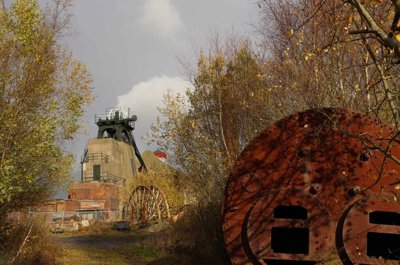Downloads
In-depth qualitative research in former coalfield communities in the North East of England revealed that disparities in the health of communities were directly influenced by where they live. Improving awareness of these disparities helped the communities most affected to receive additional support.
Challenge
Areas in the UK affected by deindustrialisation experienced job losses, economic decline and poor health outcomes, including in coalfield areas in the 1980s and 1990s. Understanding how and where resulting poor health inequalities have persisted in to the 21st century is important to advocating for, targeting and delivering services to address poor health outcomes. Geographical research offers an important way to understand how health outcomes are unequal between different areas, and so where intervention and support is most needed.
Solution
Professor Sarah Curtis of Durham University carried out research into health outcomes in former coalfield communities in England, which highlighted geographical disparities and health inequality.
First, Dr Curtis contributed to a 2010 report on health inequalities in former coalfield areas for the Improvement and Development Agency for Local Government (IDeA, now part of the Local Government Association). The team examined data from the Health Survey for England from 1994 – 2007 in 55 former coalfield areas. This included factors including deprivation levels, changes in employment, disease-specific mortality ratios and changes in mortality ratios. The data from the coalfield regions were compared to data from non-coalfield areas to identify geographical health disparities. The project found that former coalfield areas were more deprived and less healthy than other areas in England.
Dr Curtis’ later work, published in 2011 with an interdisciplinary team from three institutions, surveyed 26,000 people including 4750 from ex-coalfield areas. This in-depth qualitative research also discovered regional disparities, and found that people living in former coalfield communities were 27 per cent more likely to have a long-term limiting illness such as arthritis, asthma and back problems (though some communities demonstrated better health outcomes).
Benefits
Solving problems
The IDeA eport Health Inequalities in Ex-Coalfield/Industrial Communities was published by IDeA and the Department of Health in 2010. It highlighted significant health inequalities experienced by coalfield communities, such as higher mortality ratios in former coalfield areas.
It identified suggestions for changes and good practice in how coalfield regeneration efforts can be directed by local authorities, including encouraging and improving access to complementary clinical interventions via Primary Care Trusts, supporting partnership working, and community-level intervention.
The IDeA report was central to discussion of health in Coalfield Regeneration Review Board review in 2010, chaired by Michael Clapham. The review assessed, among other things, health issues in ex-coalfield communities, for which the IDeA report was used as a defining example of health inequalities in ex-coalfield areas. The Review also noted that the team had “successfully pioneered a local approach and encouraged local authorities and Primary Care Trusts to work together” (Clapham Review, 4.25).
The subsequent Government response to the Clapham Review described a “strong case...for targeted support”, and promised £30 million for the Coalfields Regeneration Trust, and £150 million for Homes and Communities Agency projects in coalfields.
Raising awareness and improving understanding
The 2011 research raised awareness of the geography of health inequalities through national and local media including BBC News and the Northern Echo, particularly highlighting the persistence of health problems decades after closures.
Further reading
Health Inequalities in Ex-Coalfield/IndustrialCommunities, a report to IDeA (2010)
Variation in health across former coalfield areas in England (2011)
Health profile for England: Inequalities in health (2018)
The Coalfields Regeneration Trust released a 2019 report on coalfield areas which examined the current issues and state of progress around regeneration, and followed up on a 2014 report from Sheffield Hallam University
This case study was first published by the Society in 2008 and was updated in 2019.
Share this case study
This is an open access article under the terms of the Creative Commons Attribution License (CC BY NC 4.0), which permits use, adaptation, distribution and reproduction in any medium or format, provided the original work is cited and it is for non-commercial purposes. Please contact us for other uses.
How to cite
Royal Geographical Society (with IBG) (2019) Tackling health inequalities in former coalfield communities. Available at: www.rgs.org/coalfieldcommunities Last accessed on: <date>
